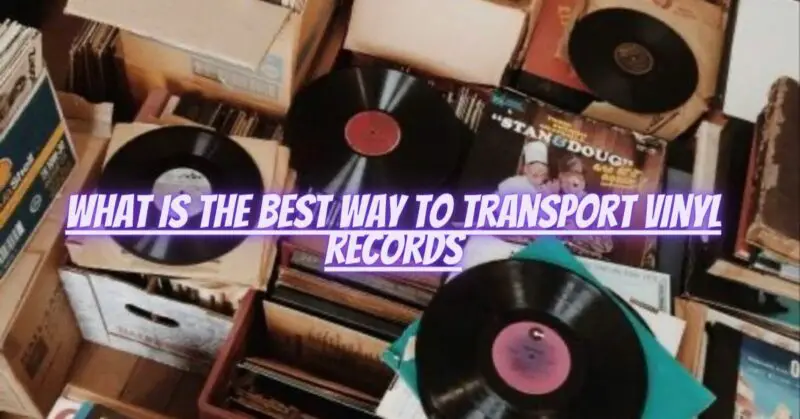Transporting vinyl records requires careful attention to ensure their safety and preservation. Whether you’re moving house, taking records to a DJ gig, or simply traveling with your collection, proper handling and protection are essential. In this article, we will explore the best practices for transporting vinyl records to help you safeguard your cherished collection.
- Use Sturdy Record Storage Boxes or Crates: Invest in high-quality record storage boxes or crates designed specifically for vinyl records. These containers provide proper support and protection against impact and pressure. Look for boxes made of durable materials with reinforced corners and handles for easy carrying. Ensure the boxes are the appropriate size to accommodate your records without excessive compression.
- Pack Records Upright: When placing records in storage boxes or crates, always store them upright in their original sleeves or protective inner sleeves. Storing records upright prevents warping and damage to the vinyl surface. Avoid stacking records horizontally, as this can result in uneven weight distribution and potential damage.
- Use Inner Sleeves for Added Protection: Consider using anti-static inner sleeves or polyethylene sleeves to protect the vinyl surface from dust and scratches. These sleeves help prevent friction and static buildup during transportation. If the records have valuable or delicate covers, consider using outer protective sleeves to shield them from dirt and potential damage.
- Fill Empty Space: To prevent records from shifting during transportation, fill any empty space in the storage boxes or crates with bubble wrap, foam inserts, or packing paper. This helps stabilize the records and minimizes movement, reducing the risk of damage caused by impact or vibrations.
- Handle with Care: When carrying and moving the record storage boxes or crates, handle them with care. Lift them from the bottom, supporting the weight evenly to avoid putting excessive pressure on the records. Avoid tilting or shaking the boxes, as this can cause records to shift and potentially collide with one another.
- Avoid Extreme Temperatures and Humidity: During transportation, avoid exposing vinyl records to extreme temperatures or high humidity. Keep them away from direct sunlight and sources of heat, such as car trunks or heaters. Excessive heat or cold can cause warping or damage to the vinyl, while high humidity can promote mold growth and degrade the record sleeves.
- Securely Fasten the Storage Boxes or Crates: Ensure that the storage boxes or crates are securely fastened or latched to prevent accidental opening and potential damage to the records. Use straps or bungee cords if necessary to keep the containers tightly closed during transportation.
- Consider Insurance: For valuable or rare vinyl records, consider obtaining insurance coverage to protect against loss, theft, or damage during transportation. Check with your insurance provider or consider specialized insurance options for valuable collections.
Conclusion: Transporting vinyl records requires careful planning and attention to detail to ensure their safety and preservation. By using sturdy storage boxes, packing records upright with protective inner sleeves, filling empty space, handling with care, avoiding extreme temperatures and humidity, securely fastening containers, and considering insurance for valuable records, you can transport your vinyl collection with peace of mind. Remember, proper handling and protection are crucial to maintaining the integrity and enjoyment of your cherished vinyl records.


